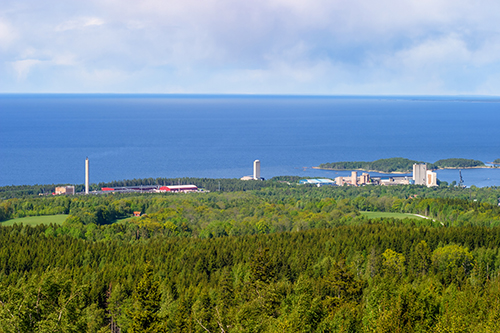Manufacturers can compete from high-cost Sweden
In a new thesis, PhD Cinzia Sansone from the School of Engineering at Jönköping University argues that, by focusing on the right capabilities, manufacturers who exist within high-cost environments, such as Sweden, can, in fact, gain a competitive advantage without having to move operations to low-cost countries.

In her research, Cinzia Sansone looked at a range of manufacturing industries in Sweden, large and small, from telecom giants to small textile industries. (image:istock)
For many years, manufacturers have been taking their operations ‘off-shore’ to low-cost countries such as China or Thailand; places where the cost of producing goods is far lower than in Sweden. But recently, the trend has started to reverse.
If they didn’t already know it before, events such as the Covid-19 pandemic have made manufacturers acutely aware of how fragile global supply chains can be. Keeping operations and suppliers closer to home is becoming more attractive.
%20(2)%20Cinzia%20Sansone.jpg)
Cinzia Sansone defended her thesis on 16 November at the School of Engineering, Jönköping University.
Focus on the right capabilities
It’s possible for manufacturers to do this and stay competitive, but, says Cinzia Sansone, they need to be smart about it.
“Manufacturers operating here in Sweden cannot offer the lowest cost product, but there are other capabilities they can focus on. High quality products, innovative solutions and services or better sustainability – these kinds of capabilities can help them stand out and gain a competitive advantage. Manufacturers need to think strategically and focus on the right capabilities for their business,” says Cinzia Sansone.
Cinzia Sansone looked at two questions in her research: what kind of critical operations capabilities are there for competitive manufacturing in a high-cost environment, and how do these capabilities contribute to competitive advantage?
To answer these questions, she looked at a range of manufacturing industries in Sweden, large and small, from telecom giants to small textile industries. In her research she identified a framework of 27 different capabilities related to dimensions such as costs, time, flexibility, quality, innovation, and sustainability.
“The operations capabilities I looked at have always existed, but the key is how a company will put their focus on specific capabilities that allow them to differentiate from their competitors who operate in low-cost environments,” explains Cinzia Sansone. “A company in a high-cost environment can stand out, for example, by putting its emphasis on customized services and products. Or they can focus on innovation and see how new tech or new services can make their product more attractive for the customer.”
Competitive regardless of size
What surprised Cinzia Sansone in her findings was when comparing both large and smaller manufacturers that were operating in a high-cost environment, both were equally competitive, regardless of their size, because they were focusing on the same capabilities – innovation, quality, and flexibility. She also discovered that companies were focusing on sustainability to a greater degree than we think.
“My research offers a new framework that is relevant not only for manufacturers here in Sweden, but in other high-cost environments. It’s a starting point for future research to compare differences between both high-cost and low-cost environments, and to see what new capabilities are emerging and how competition is changing,” she says.
Cinzia Sansone defended her thesis “Critical Operations Capabilities for Competitive Manufacturing: A High-Cost Environment Perspective” on 10 December 2021 at the School of Engineering, Jönköping University.
